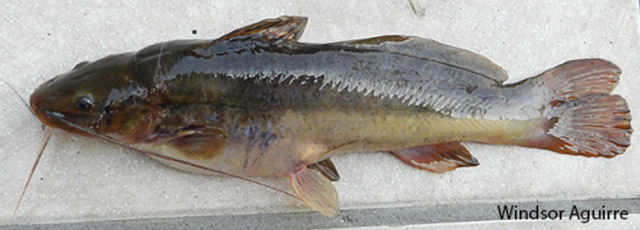| Heptapteridae (Three-barbeled catfishes) |
| 61 cm TL (male/unsexed); max.weight: 4,020.0 g |
|
benthopelagic; freshwater; pH range: 7; depth range 0 - 3 m |
| Central and South America: Mexico to central Argentina. |
|
|
| Occurs in littoral creeks, over sandy bottoms covered with dead leaves (Ref. 27188). Inhabits also lakes and rivers, but seems to prefer rivers with a very slight current (Ref. 6868). Prefers a muddy bottom covered with leaves and decaying wood, the latter providing for hiding places during the day (Ref. 35381). Feeds on fish and insects (Ref. 27188), benthic zooplankton and crustaceans (Ref. 35381). Omnivorous (Ref. 79585). Mainly nocturnal (Ref. 11225). Possesses poisonous spiny rays. Its sex ratio is 2:1 in favor of females. The male's reproductive apparatus includes multi-lobed testicles and accessory organs for secretion and storage. Fertilization is external. Non-sticking demersal eggs (1.1 to 2.8 mm diameter) are laid down, hatching after about 48 hours at 22°C. Ten days later, the larvae weigh approximately 100 mg but growth is slow (0.5 to 1.15 g per day). |
|
Least Concern (LC); Date assessed: 19 March 2018 Ref. (130435)
|
| harmless |
|
Source and more info: www.fishbase.org. For personal, classroom, and other internal use only. Not for publication.

